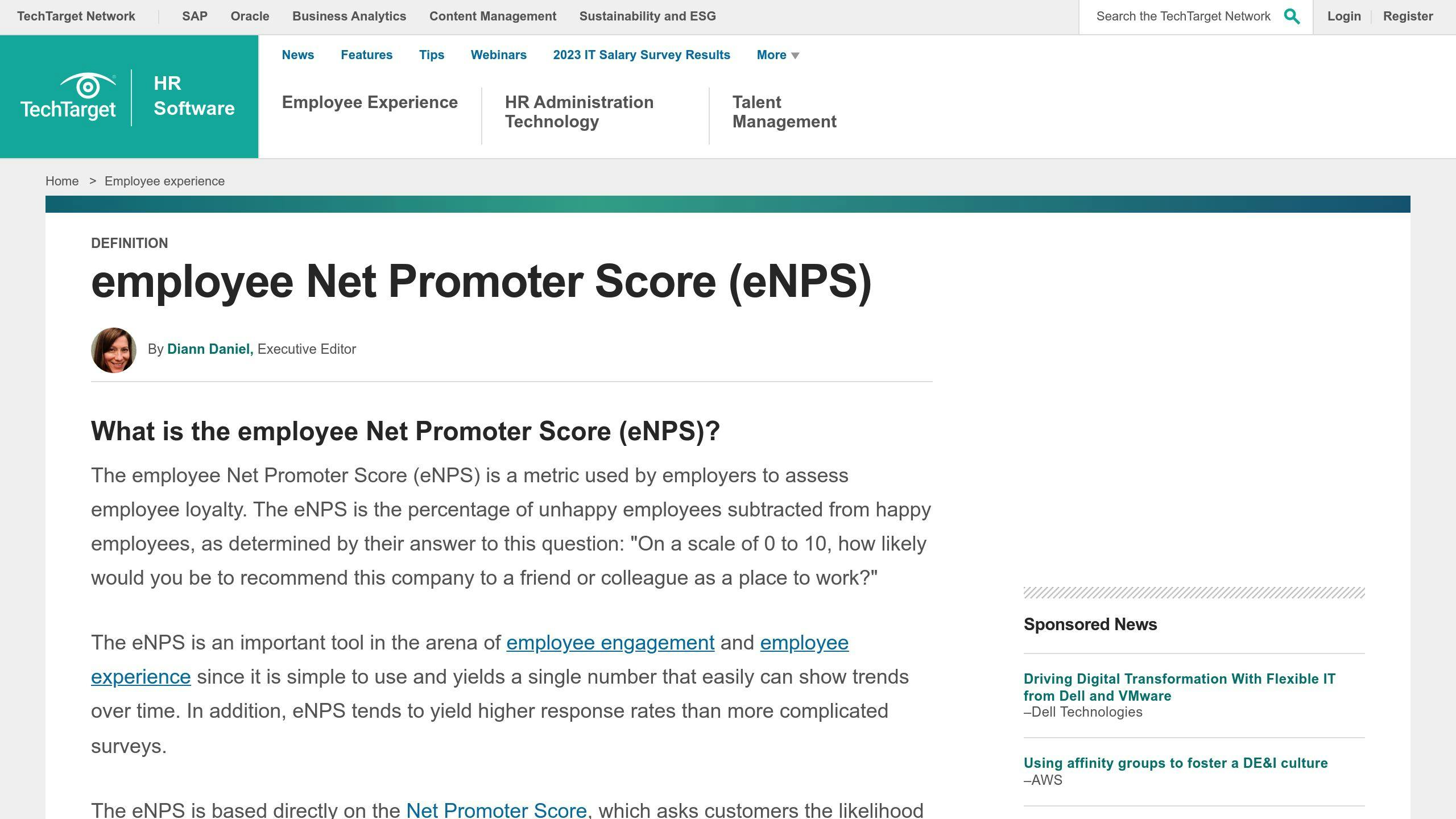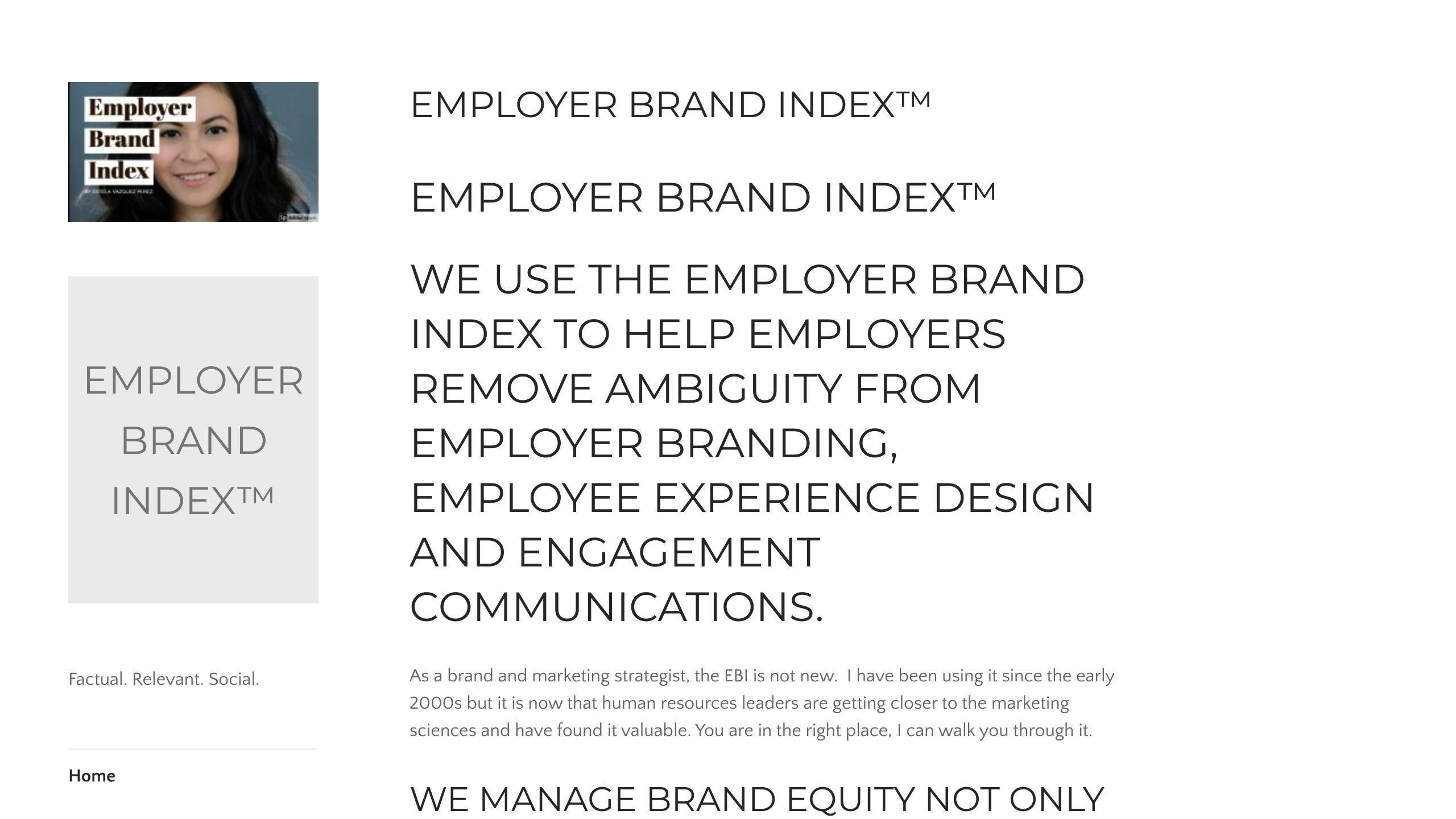Employer branding is crucial for attracting and retaining top talent. Here are the 10 key metrics to track in 2024:
-
Candidate Satisfaction Score: Measure how satisfied candidates are with your hiring process through surveys and interviews.
-
Employee Referral Rate: Track the percentage of new hires from employee referrals, indicating positive employee sentiment.
-
Offer Acceptance Rate: Monitor the rate at which candidates accept job offers, reflecting the strength of your employer brand.
-
Cost per Hire: Calculate the average cost of hiring a new employee, helping identify areas for cost optimization.
-
Social Media Engagement: Analyze metrics like follower count, engagement rate, and impressions to gauge your brand’s online presence.
-
Employee Turnover: Measure voluntary and involuntary turnover rates, which can signal issues with your work environment or employer brand.
-
Quality of Hire: Assess new hires’ performance, productivity, and job fit to ensure you’re attracting the right talent.
-
Time to Fill: Track the time it takes to fill open positions, as lengthy processes can impact productivity and candidate experience.
-
Employee Net Promoter Score (eNPS): Survey employees’ willingness to recommend your company as a great place to work.
-
Employer Brand Index (EBI): Analyze your employer brand across 16 key attributes, including culture, benefits, and work-life balance, using data from various sources.
By monitoring these metrics, you can identify areas for improvement, optimize your employer branding strategies, and stay competitive in attracting and retaining top talent.
Related video from YouTube
1. Candidate Satisfaction Score
How to Measure
- Conduct surveys and interviews with candidates at different stages of the hiring process
- Ask candidates to rate their experience on a scale (e.g., 1-10) for aspects like communication, transparency, professionalism, application process, and interviews
- Collect feedback through online surveys, phone interviews, or in-person discussions
Why It Matters
- Shows how happy candidates are with the hiring process
- Indicates if candidates have a positive view of your company
- Helps find and fix common issues in the hiring process
- Allows for ongoing improvement of the candidate experience
Insights Provided
- Identifies strengths and weaknesses in the hiring process
- Reveals issues with communication, transparency, or professionalism
- Pinpoints problems in the application or interview stages
- Provides a numerical measure of candidate satisfaction levels
2. Employee Referral Rate
How to Measure
| Method | Description |
|---|---|
| Track Referrals | Count new hires from employee referrals |
| Calculate Percentage | Find the percentage of total hires from referrals |
| Monitor by Category | Check referral rates by department, role, location, etc. |
| Use Tools | Utilize an employee referral program or applicant tracking system |
Why It Matters
- High referral rates show positive employee feelings
- Referred candidates are often better fits
- Referrals can save time and money in hiring
- Shows employees are promoting your company
Insights Provided
- Effectiveness of referral program incentives
- Departments or roles with low referral rates
- Strength of your employer brand
- Employee engagement and advocacy levels
3. Offer Acceptance Rate
How to Measure
- Track Offers Extended and Accepted: Count the number of job offers made and the number accepted by candidates over a specific period (e.g., monthly, quarterly, annually).
- Calculate Percentage: Divide the number of accepted offers by the total number of offers extended, and multiply by 100 to get the offer acceptance rate percentage.
- Monitor by Role, Department, Location: Break down the offer acceptance rate by different categories like job role, department, location, etc. to identify areas of strength or concern.
- Use Applicant Tracking Systems: Leverage recruitment software or applicant tracking systems to automatically track offer details and calculate the acceptance rate.
Why It Matters
- Reflects Candidate Experience: A high offer acceptance rate often indicates a positive candidate experience throughout the recruitment process.
- Showcases Employer Brand: Strong acceptance rates suggest your employer brand resonates well with top talent in the market.
- Impacts Hiring Costs: Low acceptance rates lead to more time and resources spent on extending additional offers, increasing hiring costs.
- Highlights Competitive Positioning: Offer acceptance provides insights into how your compensation and benefits packages compare to competitors.
Insights Provided
- Identify Recruitment Process Issues: Low acceptance rates may reveal problems in areas like communication, interview experience, or lengthy hiring timelines.
- Assess Job Offer Competitiveness: Analyze why candidates decline offers to understand if compensation, benefits, or other factors need improvement.
- Pinpoint Talent Sourcing Challenges: Roles or departments with consistently low acceptance rates could indicate challenges in attracting the right talent pool.
- Measure Employer Branding Efforts: Track how employer branding initiatives impact offer acceptance over time, reflecting their effectiveness.
4. Cost per Hire
How to Measure
1. Calculate Total Recruitment Costs
- Add up all internal costs (e.g., recruiter salaries, background checks, administrative expenses) and external costs (e.g., job postings, agency fees, recruitment events).
2. Count Total New Hires
- Determine the number of new employees hired within a specific time period (e.g., quarterly, annually).
3. Calculate Cost per Hire
- Divide the total recruitment costs by the total number of new hires to get the average cost per hire.
4. Break Down by Sources
- Analyze cost per hire for different recruitment sources (job boards, career fairs, employee referrals, etc.) to identify the most cost-effective channels.
5. Use Recruitment Software
- Leverage applicant tracking systems (ATS) or recruitment management tools to automatically track and calculate cost per hire metrics.
Why It Matters
- Measure Recruitment Efficiency: Cost per hire shows how efficiently your organization attracts and hires new talent, helping identify areas for cost optimization.
- Benchmark Against Industry Standards: Comparing your cost per hire with industry averages can reveal if your recruitment process is overspending or underperforming.
- Allocate Recruitment Budget: Understanding cost per hire helps allocate recruitment budgets effectively across different sourcing channels and hiring initiatives.
- Evaluate Recruitment ROI: Assessing cost per hire against factors like employee productivity and retention can demonstrate the return on investment (ROI) of your recruitment efforts.
Insights Provided
- Identify Cost-Effective Sourcing Channels: Analyzing cost per hire by recruitment source can highlight the most cost-efficient channels for attracting top talent.
- Optimize Recruitment Processes: High cost per hire may indicate inefficiencies in areas like screening, interviewing, or onboarding that need to be streamlined.
- Assess Recruitment Technology ROI: Evaluating cost per hire before and after implementing new recruitment tools can demonstrate their impact on efficiency and cost savings.
- Negotiate Better Vendor Rates: Armed with cost per hire data, organizations can negotiate better rates with recruitment agencies or job board vendors based on performance.
5. Social Media Engagement
How to Measure
| Metric | Description |
|---|---|
| Follower Count | Track the number of followers on LinkedIn, Twitter, Facebook, and Instagram. |
| Engagement Rate | Calculate the percentage of followers interacting with your posts (likes, comments, shares, clicks). |
| Impressions and Reach | Measure the number of times your posts were displayed (impressions) and the number of unique users who saw them (reach). |
| Sentiment Analysis | Use tools to analyze comments and mentions about your brand. Identify positive, negative, or neutral sentiment. |
Why It Matters
- Increases Brand Awareness: An active social media presence makes your company more visible to potential candidates.
- Engages Candidates: Social media allows direct interaction with candidates, helping you understand their interests.
- Shows Employee Experience: Content shared by employees gives a real look into your workplace.
- Measures Brand Resonance: Engagement metrics show how well your messages connect with your audience.
Insights Provided
- Content Performance: See which types of content (videos, images, stories) get the most engagement.
- Audience Targeting: Identify the demographics and interests of your most engaged followers.
- Competitor Comparison: Compare your social media performance with industry peers.
- Platform Effectiveness: Evaluate which social media platforms are best for reaching and engaging your target candidates.
sbb-itb-32d91a1
6. Employee Turnover
How to Measure
| Metric | Description |
|---|---|
| Turnover Rate | Percentage of employees who left during a specific period (monthly, quarterly, or annually). |
| Voluntary Turnover | Number of employees who resigned voluntarily. |
| Involuntary Turnover | Number of employees who were terminated or laid off. |
| Regrettable Turnover | Number of high-performing employees who left. |
Why It Matters
- Retention Issues: High turnover can signal problems with work environment, pay, or career growth.
- Hiring Costs: Replacing employees is costly, involving hiring, onboarding, and training.
- Productivity Loss: Frequent turnover disrupts workflows and can lead to knowledge gaps.
- Brand Impact: High turnover can harm the company’s reputation, making it harder to attract top talent.
Insights Provided
- Turnover Trends: Track turnover rates over time to spot patterns and causes.
- Department Analysis: Identify teams or departments with high turnover rates.
- Exit Interviews: Use feedback from departing employees to understand why they are leaving.
- Benchmarking: Compare your turnover rates with industry averages to assess performance.
7. Quality of Hire
How to Measure
| Metric | Description |
|---|---|
| New Hire Performance | Assess new hires’ productivity, goal achievement, and ability to meet job expectations through performance reviews, customer feedback, and output metrics. |
| Employee Retention Rate | Track the percentage of new hires who stay with the company after a set period, typically one year. A high retention rate indicates successful hiring. |
| Hiring Manager Satisfaction | Survey or interview hiring managers to gauge their satisfaction with the quality of candidates, hiring process efficiency, and overall recruitment support. |
| Time to Productivity | Measure the time it takes for a new hire to become fully productive in their role. A shorter ramp-up time signifies effective onboarding and training. |
| Pre-Hire Assessment Scores | Use pre-employment assessments to evaluate candidates’ skills, aptitudes, and job fit, and correlate scores with post-hire performance. |
Why It Matters
- Reduce Hiring Costs: Poor quality hires lead to high employee turnover, resulting in significant costs for replacement hiring and training.
- Boost Productivity: High-performing new hires contribute to increased team productivity, output quality, and overall business success.
- Improve Retention: Hiring candidates who are a strong fit and meet job requirements leads to higher job satisfaction and longer tenure.
- Enhance Employer Brand: A reputation for hiring top talent can attract better candidates and strengthen the company’s employer brand.
Insights Provided
- Hiring Source Analysis: Identify the most effective recruitment channels and sources for quality hires.
- Recruiter Performance: Evaluate individual recruiters’ ability to source and hire top talent based on quality of hire metrics.
- Skills Gap Identification: Pinpoint skills or competency gaps in the existing workforce to refine hiring criteria and training programs.
- Process Optimization: Analyze quality of hire data to identify areas for improvement in the recruitment and onboarding processes.
8. Time to Fill
How to Measure
| Method | Description |
|---|---|
| Job Opening to Offer Acceptance | Count the days from posting a job to a candidate accepting the offer. |
| Source Effectiveness | Track time to fill for different sources (job boards, referrals, etc.). |
| Role Comparison | Compare time to fill across roles or departments. |
Why It Matters
- Productivity Impact: Long time to fill can reduce productivity due to vacant roles or overworked teams.
- Cost Savings: Shorter time to fill reduces recruitment costs.
- Candidate Experience: Long hiring processes may cause top candidates to lose interest or accept other offers.
Insights Provided
- Hiring Process Bottlenecks: Identify delays in the recruitment workflow.
- Forecasting Needs: Use past data to predict future hiring timelines.
- Market Competitiveness: Compare your time to fill with industry averages to gauge competitiveness.
9. Employee Net Promoter Score (eNPS)

How to Measure
| Method | Description |
|---|---|
| eNPS Survey | Send an anonymous survey asking: "On a scale of 0-10, how likely are you to recommend our company as a place to work?" |
| Response Categorization | Group responses as: Promoters (9-10), Passives (7-8), Detractors (0-6). |
| eNPS Calculation | eNPS = % Promoters – % Detractors. Ignore Passives in the calculation. |
Why It Matters
- Employee Loyalty: eNPS shows how loyal employees are to the company.
- Employee Engagement: A high eNPS means employees are engaged and satisfied.
- Talent Attraction: Companies with a strong eNPS can attract top talent through positive word-of-mouth.
Insights Provided
- Areas for Improvement: Low eNPS points out areas needing improvement in employee experience.
- Benchmarking: Compare your eNPS to industry averages and competitors.
- Segment Analysis: Analyze eNPS by department, location, tenure, etc., to find pain points.
10. Employer Brand Index (EBI)

How to Measure
The Employer Brand Index (EBI) measures your employer brand across 16 key attributes:
| Attribute | Description |
|---|---|
| Balance and well-being | Employee work-life balance and health |
| Benefits and perks | Offered benefits and perks |
| Business reputation | Company’s market reputation |
| Company culture | Workplace environment and values |
| Change and sustainability | Adaptability and long-term viability |
| Diversity and inclusion | Inclusivity and diversity efforts |
| Environmental, social and governance | ESG practices |
| Innovation and technology | Use of new technologies |
| Job satisfaction | Employee job satisfaction |
| Learning and development | Training and growth opportunities |
| Management and organization | Leadership and structure |
| Mission and purpose | Company’s mission and goals |
| Remuneration | Pay and compensation |
| Team and people | Team dynamics and relationships |
| Workplace | Physical and remote work environment |
The EBI analyzes data from over 100 user-generated sources like reviews, social media, and job boards to provide a view of what current, former, and potential employees are saying about your company online.
Why It Matters
- Identify Strengths and Weaknesses: The EBI shows which areas of your employer brand are viewed positively or negatively by employees.
- Track Progress Over Time: Regular EBI measurements help you see how your employer branding efforts are working.
- Benchmark Against Competitors: Compare your EBI scores with those of industry competitors.
Insights Provided
- Employer Branding Themes: The EBI groups findings into themes like culture, work-life balance, and career growth, helping you focus on key areas.
- Location and Function Analysis: Optional add-ons give insights into how your brand is seen in different regions, job functions, and segments.
- Internal vs. External View: By adding internal survey data, you can compare how employees and outsiders view your brand.
Conclusion
Tracking employer branding metrics helps you understand how well your recruitment strategies are working and where you can improve. The metrics discussed in this article offer insights into different parts of your employer brand, such as candidate experience, employee satisfaction, recruitment efficiency, and overall brand perception.
By regularly monitoring these metrics, you can make informed decisions to improve your employer branding efforts and stay competitive:
- Candidate Satisfaction Score
- Employee Referral Rate
- Offer Acceptance Rate
- Cost per Hire
- Social Media Engagement
- Employee Turnover
- Quality of Hire
- Time to Fill
- Employee Net Promoter Score (eNPS)
- Employer Brand Index (EBI)
As the job market changes, it’s important to keep up with new trends and adjust your employer branding strategies. Using new tools, creating a positive work environment, and focusing on diversity and inclusion will help you attract and keep top talent.
FAQs
How to track employer branding?
To track employer branding effectively, collect and analyze data from various sources:
| Source | Method |
|---|---|
| Candidate Surveys | Gather feedback from candidates at different stages of the recruitment process. |
| Employee Surveys | Conduct regular employee engagement surveys to gauge satisfaction and loyalty. |
| Social Media Analytics | Monitor metrics like engagement, reach, and follower growth. |
| Website Analytics | Track visitor behavior, bounce rate, and conversion rate on your careers portal. |
| Recruitment Metrics | Analyze metrics like application rate, offer acceptance rate, time to fill, cost per hire, and quality of hire. |
What is employer branding analysis?
Employer branding analysis evaluates the effectiveness of your employer branding strategies and their impact on attracting, engaging, and retaining top talent. It involves measuring and analyzing various metrics related to candidate experience, employee satisfaction, recruitment efficiency, and overall brand perception. This analysis helps identify areas for improvement and optimize your employer branding efforts.
How to measure the success of employer branding?
To measure the success of your employer branding efforts, track and analyze the following key metrics:
| Metric | Description |
|---|---|
| Candidate Quality | Evaluate the qualifications, experience, and fit of the candidates you’re attracting. |
| Cost per Hire | A strong employer brand can reduce the cost per hire by attracting more quality candidates. |
| Brand Awareness | Monitor metrics like website traffic, social media engagement, and job posting views. |
| Source of Hire | Analyze the effectiveness of different recruitment sources. |
| Offer Acceptance Rate | A high offer acceptance rate indicates a positive perception of your employer brand. |
| Employee Referral Rate | A high referral rate suggests employee satisfaction and confidence in recommending your organization. |
| Employee Retention Rate | A low turnover rate and high retention rate indicate effective engagement and retention. |
| Employee Net Promoter Score (eNPS) | Measures employees’ willingness to recommend your organization as a great place to work. |




